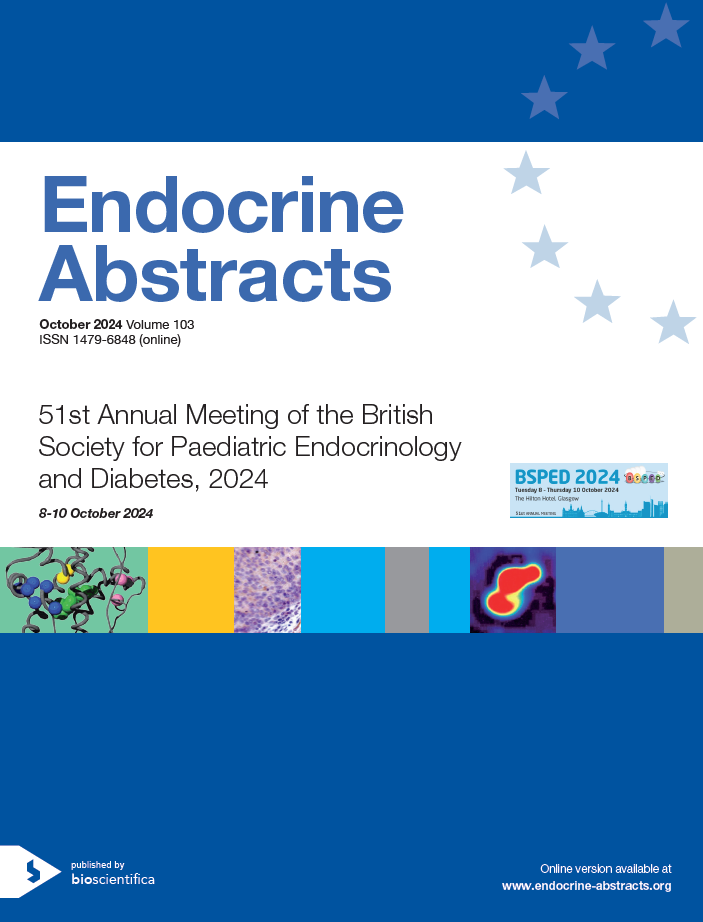
51st Annual Meeting of the British Society for Paediatric Endocrinology and Diabetes
Glasgow,
UK
08 Oct 2024 - 10 Oct 2024

Oral Communications
Endocrine Oral Communications 2
ea0103oc6.1 | Endocrine Oral Communications 2 | BSPED2024
DXA lean mass index as a predictor of loss of ambulation in duchenne muscular dystrophy and potential biomarker to initiate osteoporosis therapy prior to fractures
Docherty Stewart Bronwyn , Dunne Jennifer , Horrocks Iain , Joseph Shuko , Shepherd Sheila , Wong SC
ea0103oc6.2 | Endocrine Oral Communications 2 | BSPED2024
BSPED audit of clinical standards for differences of sexual development (DSD)
Eddy Danielle , Scrivens Emma , Crowne Liz , Mohamed Zainaba
ea0103oc6.3 | Endocrine Oral Communications 2 | BSPED2024
Systematic review of cardiometabolic outcomes in young people with gender dysphoria and the impact of puberty blockers
McKechnie Jennifer , McGinley Kirsty , Lucas-Herald Angela , Delles Christian , Mason Avril , Wong Sze Choong.
ea0103oc6.4 | Endocrine Oral Communications 2 | BSPED2024
Low-level chromosomal mosaicism does not explain the spontaneous menarche seen in some women with 45,X turner syndrome
McGlacken-Byrne Sinead , Suntharalingham Jenifer P. , Ishida Miho , Buonocore Federica , Valle Ignacio Del. , Cameron-Pimblett Antoinette , Genomics UCL , Madhan Gaganjit K. , Achermann John C. , Conway Gerard S.
ea0103oc6.5 | Endocrine Oral Communications 2 | BSPED2024
Rare causes of silver-russell syndrome frequently present with atypical features highlighting important implications for genetic testing and clinical management
Palau Helena , Kurup Uttara , N. Lim David B. , Ishida Miho , Maharaj Avinaash V. , Davies Justin H. , Storr Helen L.



